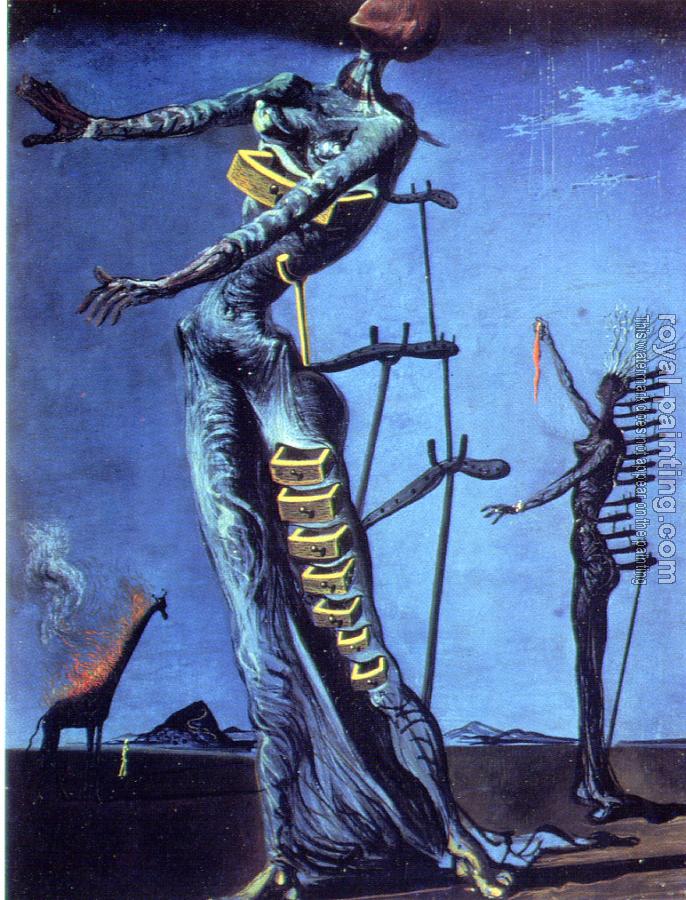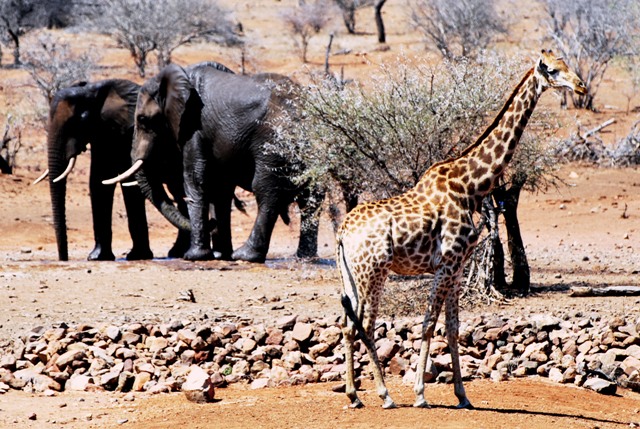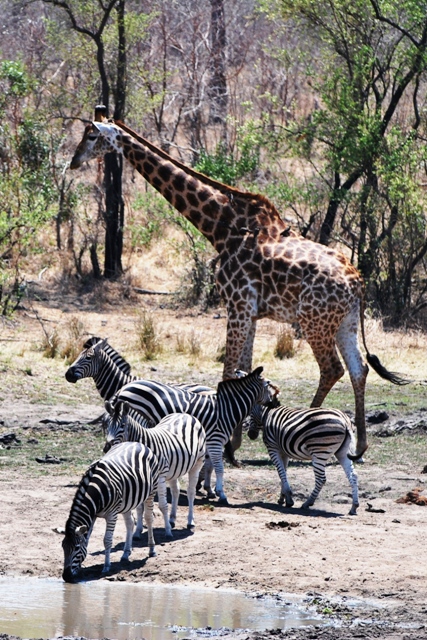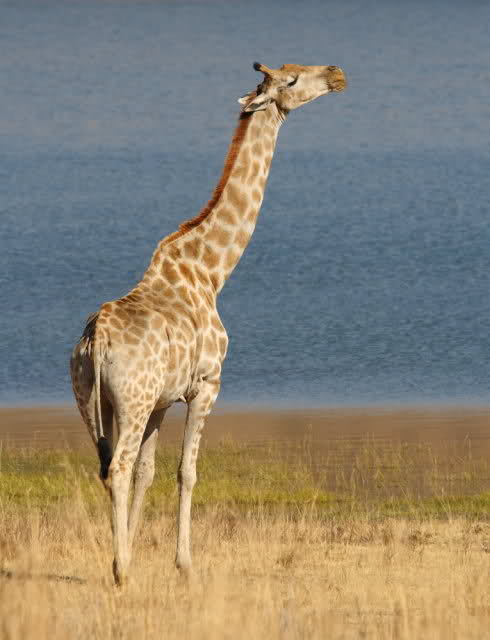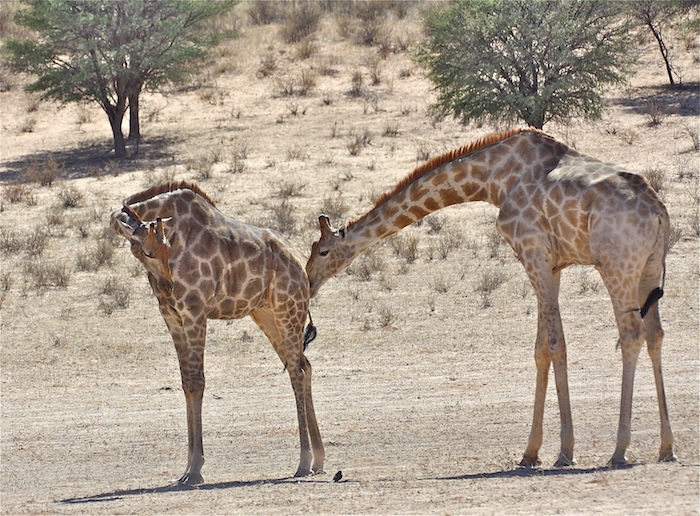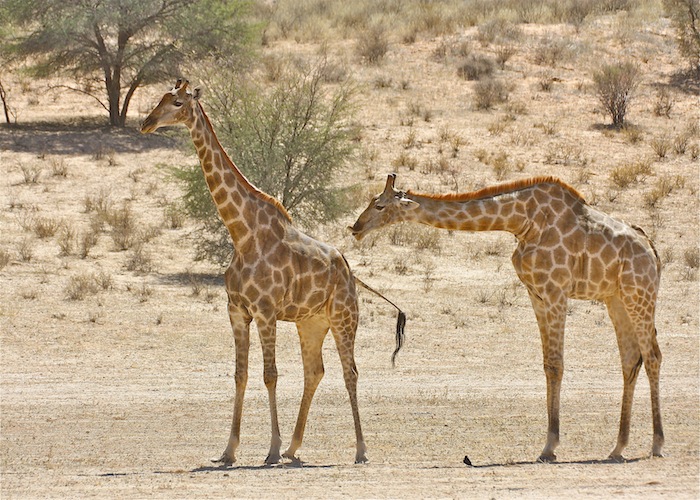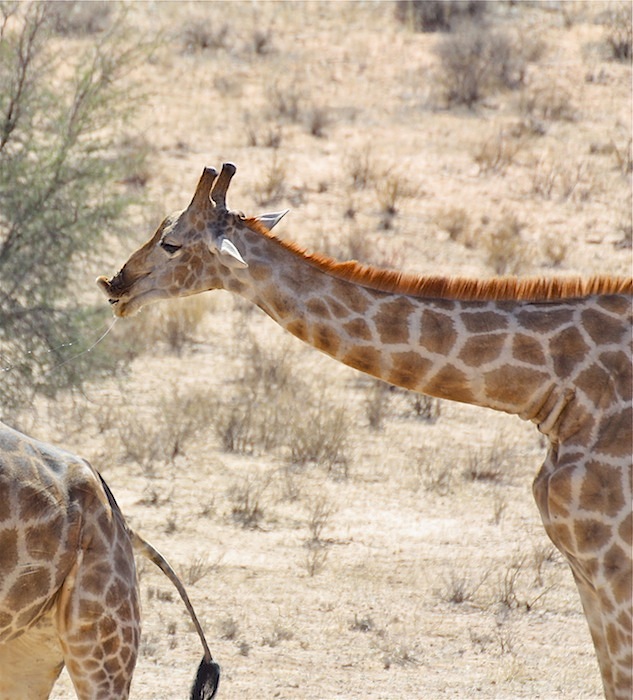Up to nine subspecies of giraffe are recognized (with population estimates as of 2010):
The
Nubian giraffe,
G. c. camelopardalis: found in eastern South Sudan and south-western Ethiopia. Fewer than 250 are thought to remain in the wild, although this number is uncertain. It is rare in captivity, although a group is kept at Al Ain Zoo in the United Arab Emirates. In 2003, this group numbered 14.
The
Reticulated giraffe,
G. c. reticulata: also known as the Somali giraffe, is native to north-eastern Kenya, southern Ethiopia, and Somalia. An estimated no more than 5,000 remain in the wild, and based on International Species Information System records, more than 450 are kept in zoos.
The
Angolan giraffe,
G. c. angolensis: also know as the Namibian giraffe, can be found in northern Namibia, south-western Zambia, Botswana, and western Zimbabwe. A 2009 genetic study on this subspecies suggests the northern Namib Desert and Etosha National Park populations form a separate subspecies. No more than 20,000 are estimated to remain in the wild, and about 20 are kept in zoos.
The
Kordofan giraffe,
G. c. antiquorum: a distribution which includes southern Chad, the Central African Republic, northern Cameroon, and north-eastern DR Congo. No more than 3,000 are believed to remain in the wild. Considerable confusion has existed over the status of this subspecies and G. c. peralta in zoos. In 2007, all alleged G. c. peralta in European zoos were shown to be, in fact, G. c. antiquorum. With this correction, about 65 are kept in zoos.
The
Masai giraffe,
G. c. tippelskirchi: also known as the Kilimanjaro giraffe, can be found in central and southern Kenya and in Tanzania. No more than 40,000 are thought to remain in the wild, and about 100 are kept in zoos.
The
Rothschild's giraffe,
G. c. rothschildi: named for Walter Rothschild, is also called the Baringo or Ugandan giraffe. Its range includes parts of Uganda and Kenya. Its presence in South Sudan is uncertain. Fewer than 700 are believed to remain in the wild, and more than 450 are kept in zoos.
The
South African giraffe,
G. c. giraffa: found in northern South Africa, southern Botswana, southern Zimbabwe, and south-western Mozambique. Less than 12,000 are estimated to remain in the wild, and around 45 are kept in zoos.
The
Rhodesian giraffe,
G. c. thornicrofti: also called the Thornicroft giraffe after Harry Scott Thornicroft, is restricted to the Luangwa Valley in eastern Zambia. No more than 1,500 remain in the wild, with none kept in zoos.
The
West African giraffe,
G. c. peralta: also known as the Niger or Nigerian giraffe, is endemic to south-western Niger. Fewer than 220 individuals remain in the wild. Giraffes in Cameroon were formerly believed to belong to this subspecies, but are actually G. c. antiquorum.

Giraffe subspecies are distinguished by their coat patterns. The reticulated and Masai giraffes represent two extremes of giraffe patch shapes. The former has neatly shaped patches, while the latter has jagged ones. The widths of the lines separating the patches also differ. The West African giraffe has thick lines, while the Nubian and reticulated giraffes have thin ones. The former also has a lighter pelage than other subspecies.
A 2007 study on the genetics of six subspecies—the West African, Rothschild's, reticulated, Masai, Angolan, and South African giraffe—suggests they may, in fact, be separate species. The study deduced that giraffes from these populations are reproductively isolated and rarely interbreed, though no natural obstacles block their mutual access. This includes adjacent populations of Rothschild's, reticulated, and Masai giraffes. The Masai giraffe may also consist of a few species separated by the Rift Valley. Reticulated and Masai giraffes have the highest mtDNA diversity, which is consistent with the fact that giraffes originated in eastern Africa. Populations further north evolved from the former, while those to the south evolved from the latter. Giraffes appear to select mates of the same coat type, which are imprinted on them as calves. The implications of these findings for the conservation of giraffes were summarised by David Brown, lead author of the study, who told BBC News: "Lumping all giraffes into one species obscures the reality that some kinds of giraffe are on the brink. Some of these populations number only a few hundred individuals and need immediate protection."
Sources:
http://www.whitecountyhighschool.com/Ba ... bsite.html
http://en.wikipedia.org/wiki/Giraffe







